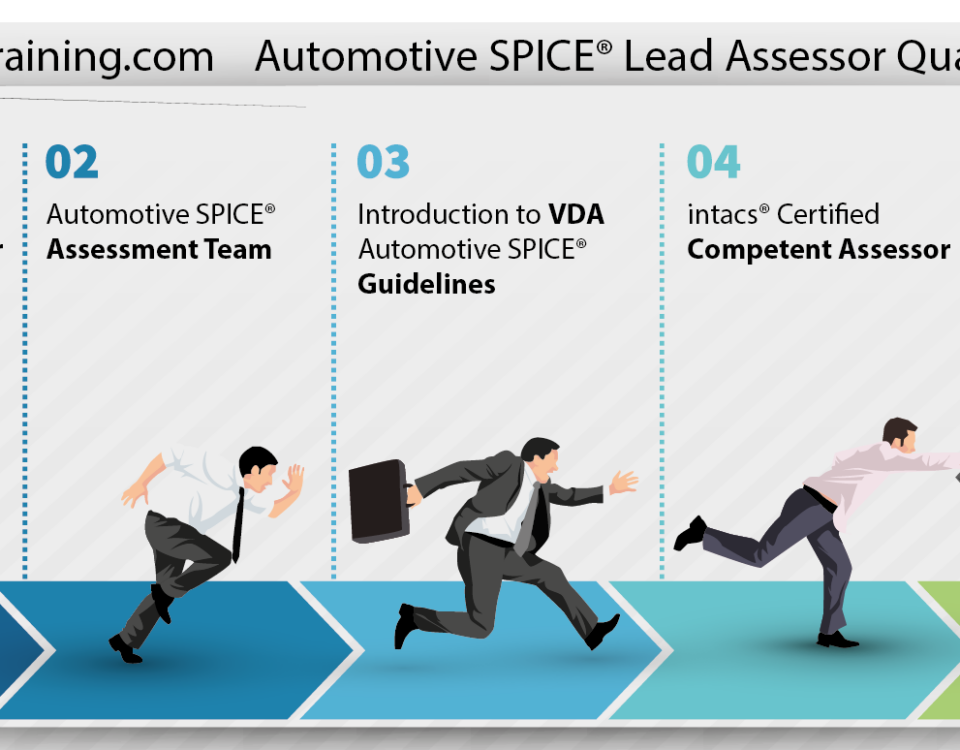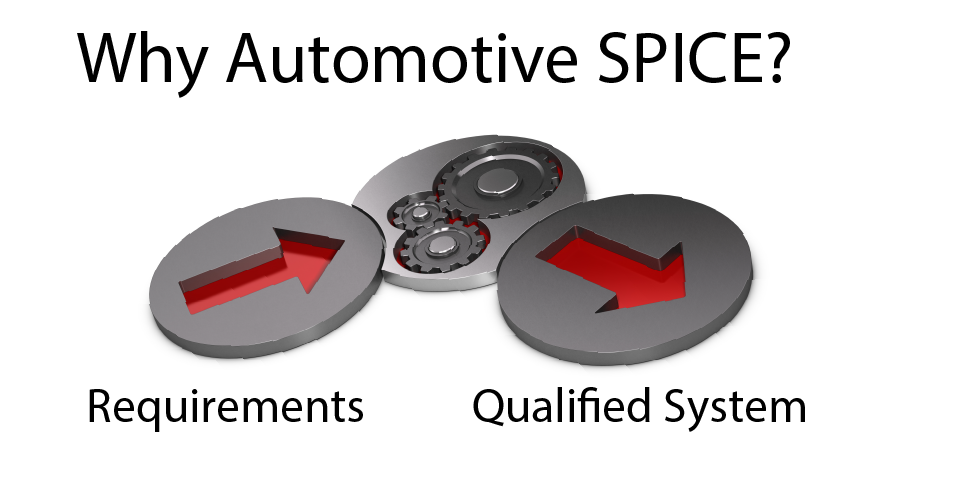intacs Certified Provisional Assessor (Automotive SPICE® v3.1)
intacs Certified Competent Assessor (Automotive SPICE® v3.1)
Introduction to the VDA Automotive SPICE® Guidelines
intacs Training: Automotive SPICE® for Cybersecurity
Our service at your fingertips
SPICE Blog
Training Concept - TASK
Transformation, Attitude, Skill, Knowledge
Automotive SPICE® compliant processes alone do not make the difference. They have to be lived. Our training concept addresses this TASK.
 Transformation
Transformation
The T in TASK stands for transformation (change). Employees in projects have to get the hang of Automotive SPICE®. It takes a process of change to go from being an observer to an insider. People only get involved in this transformation if they are convinced of the goals and the positive effect. Management buy-in is very much in demand here. Only a manager who commits himself to Automotive SPICE® can climb the summit with his team.
Assessments are not about measuring bureaucracy, but about comparing creative solutions with the Process Assessment Model (PAM). Becoming a good assessor and consultant also requires this transformation.
Our training concept is designed to prepare participants for this journey. Vision and motivation have to be sharpened in the interaction with each other.
 Attitude
Attitude
The A in TASK stands for Attitude.
"Attitudes result from ideas" (Exler, Georg-Wilhelm).
To become a team player, you need a healthy and positive attitude. This applies not only to the way we deal with each other, but also to the matter at hand. It takes time and energy to overcome obstacles.
In our training concept, we build in the interaction of the participants so that they can form their own opinion. Questions like "What needs to be emphasized?", or "What is the point of all this?" are clarified individually.
 Skill
Skill
The S in TASK stands for Skill. You can't learn to swim with a book. You have to get into the water. Implementing Automotive SPICE® processes effectively or evaluating them in an assessment must be practiced in the arena.
In our training concept, we deliberately include simulations to learn these skills in interaction.
Knowledge
The K in TASK stands for Knowledge. Knowledge has to be acquired. One person learns well with books, the other learns more audio-visually. Interactive learning stimulates different receptors in our brain for knowledge acquisition.
In our training concept the content is divided into nuggets. The knowledge is tested in short tests or presentations by the participants. In intacs certified courses, an online exam hosted by VDA QMC takes place at the end.
Aspects of Efficient Processes
1
Good Input - Quality Output
The flow of information into process in time, quality and readiness determines the quality of the output work products. The definition of done (DOD) with clear criteria for the information passed on is essential to guide repeatedly the quality of the output.
Effective Processes work with clear output criteria.
2
Clear Responsibilities
Clearly defined responsibilities paired with defined communication interfaces are essential. An effective project management MAN.3 assign people with respective training and establishes an accepted tool stack and meeting structure.
3
Know what you are doing
Planning project activities is not enough. In capability level 1 it is also essential to monitor and adjust activities, resources, quality gates, etc.
CL2 introduces process performance objectives. Process activities need to be planned, monitored and if needed to be adjusted accordingly.
4
Configuration Management
The quality of work products need to be in good shape (reviewed content, readiness, state, version, etc.) when they are picked up by the follow-up process. This is often organized in quality gates in relation with baselines.
The backbone of effective processes is a well established configuration management SUP.8 (see PA 2.2)
5
Accepted Processes
Well-designed processes balance tool support, automation, manual entries and flow of actions with respective responsibilities in a way that everybody involved loves their work.
Activities in the process lead to quality products without creating bureaucracy.
6
The last line of defense
Quality Assurance SUP.1 is in many ways the last line of defense.
Are the processes working as they should? Are the work products in good quality?
Where are the gaps to Automotive SPICE and how to close them?





